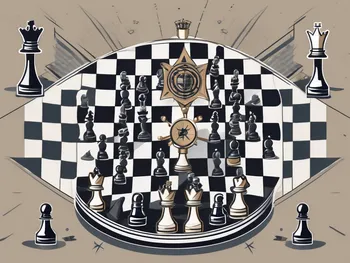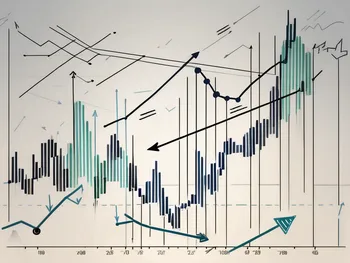How to Set Stops in Trading

As an experienced trader, I know just how important it is to have a comprehensive understanding of setting stop orders. These orders serve as a protective mechanism to limit potential losses and manage risks. In this article, I will provide you with a summary of the key aspects you need to know when it comes to setting stops in trading, including the basics, different types of stop orders, factors to consider, and strategies to apply. So, let’s dive in and explore this crucial topic together.
Understanding the Basics of Stop Orders
In order to grasp the concept and significance of stop orders in trading, it’s essential to first define what they are. Stop orders are predetermined instructions placed by traders to automatically buy or sell an asset when it reaches a specific price level. These orders help traders control losses and protect profits, as they are triggered when the market moves against their positions.
Now, let me share a personal story with you to give you some real-life context. Back when I started my trading journey, I had an unfortunate encounter with a volatile market that wiped out a significant portion of my capital. It was a painful lesson, but it taught me the invaluable importance of implementing stop orders to mitigate potential risks.
When I first began trading, I was eager to jump into the market and make quick profits. However, I soon realized that without proper risk management strategies, I was exposing myself to unnecessary risks. That’s when I learned about stop orders and how they could help protect my investments.
Definition of Stop Orders in Trading
In more technical terms, a stop order can be defined as an order type that becomes a market order once a specified price (the stop price) is reached. For example, if you are holding a long position, you might place a sell stop order below the current market price to protect yourself from further losses if the market suddenly turns against you.
Stop orders can be a powerful tool in your trading arsenal. They allow you to set a predetermined exit point, ensuring that you don’t hold onto a losing position for too long. By setting a stop order, you can automate the process of selling or buying an asset, taking the emotion out of the equation.
Importance of Stop Orders in Risk Management
Now, let’s talk about the importance of stop orders in risk management. The ultimate goal of any trader should be to protect their capital and minimize potential losses. By utilizing stop orders effectively, you can precisely define your risk tolerance and limit the impact of adverse market movements. It’s a fundamental component of any sound risk management strategy.
Imagine this scenario: you have invested a significant amount of money in a particular stock, and it starts to show signs of a downward trend. Without a stop order in place, you might hold onto the stock, hoping for a rebound. However, if the stock continues to decline, you could end up losing a substantial portion of your investment.
By setting a stop order, you can establish a predetermined point at which you are willing to exit the trade. This allows you to limit your potential losses and protect your capital. It’s like having a safety net in place, ensuring that you don’t suffer significant financial setbacks.
Furthermore, stop orders can also be used to protect profits. Let’s say you have invested in a stock that has experienced a significant price increase. By setting a trailing stop order, you can automatically adjust the stop price as the stock price rises. This way, if the stock suddenly reverses its trend, you can lock in your profits and exit the trade.
In conclusion, stop orders are a vital tool for traders looking to manage their risks effectively. They provide a level of control and protection that can help prevent significant losses and maximize profits. Whether you are a beginner or an experienced trader, incorporating stop orders into your trading strategy is essential for long-term success.
Different Types of Stop Orders
There are several types of stop orders that cater to different trading needs. Let’s explore three of the most common ones:
Stop-Loss Orders
A stop-loss order is one of the most widely used types of stop orders. It allows traders to set a predetermined exit point for a losing position. For instance, if you buy a stock at $50 per share, you might place a stop-loss order at $45 to limit your potential loss to $5 per share.
Stop-Limit Orders
A stop-limit order combines the features of a stop order and a limit order. With this type of order, once the stop price is reached, it triggers a limit order to buy or sell at a specified price or better. It provides a greater level of control over the execution price but may result in the order not being fully filled.
Trailing Stop Orders
A trailing stop order is designed to lock in profits by continuously adjusting the stop price as the market moves in your favor. If the market price increases, the trailing stop price trails behind it, protecting your profits. However, if the market price reverses and reaches the trailing stop price, the order is triggered.
Factors to Consider When Setting Stop Orders
Now that we have covered the types of stop orders at your disposal, let’s discuss the factors you should carefully consider when setting them:
Market Volatility
Market volatility plays a significant role in determining an appropriate stop order level. Higher volatility may require wider stop levels to avoid premature triggering, while lower volatility may allow for tighter stops to protect smaller price movements.
Price Levels and Support Resistance
Support and resistance levels are key areas on a price chart where prices tend to reverse or consolidate. By aligning your stop orders with these levels, you can enhance the effectiveness of your trades and potentially improve risk-to-reward ratios.
Position Size
The size of your position relative to your overall portfolio is another crucial aspect to consider. The larger the position, the wider the stop order needs to be in order to accommodate market fluctuations without being prematurely triggered.
Strategies for Setting Stop Orders
Now that we have covered the factors to consider, let’s explore a couple of strategies you can apply when setting stop orders:
Percentage Stops
Percentage stops are a simple yet powerful risk management tool. With this strategy, you determine a predetermined percentage of your trading capital that you are willing to lose per trade. For example, if you set a 2% stop, you will exit the trade if your losses exceed this percentage.
Volatility Stops
Volatility stops take into account the market’s recent price movements. By adjusting the stop level based on the asset’s historical volatility, you can adapt to varying market conditions and set more dynamic stop orders.
Time Stops
In certain situations, it may be necessary to set a time limit on a trade. Time stops ensure that you don’t hold onto losing positions for an extended period, giving you the opportunity to cut your losses and move on to more profitable opportunities.
Frequently Asked Questions
What is a stop order?
A stop order is a pre-determined instruction placed by traders to automatically buy or sell an asset when it reaches a specific price level.
Why are stop orders important?
Stop orders are vital for risk management. They allow traders to control losses and protect profits by triggering automated actions when the market moves against their positions.
What factors should I consider when setting stop orders?
When setting stop orders, it’s important to consider market volatility, price levels and support/resistance, as well as your position size relative to your overall portfolio.
What are some strategies for setting stop orders?
Some popular strategies include percentage stops, volatility stops, and time stops. These strategies help maximize risk management and optimize trade executions.
Remember, setting stops in trading is not only about limiting losses but also about protecting your capital and enhancing profitability. By understanding the basics, types, factors, and strategies surrounding stop orders, you are well-equipped to navigate the dynamic world of trading and stay ahead of the game.
Ready to elevate your trading experience with the innovative features of Morpher? Embrace the future of investing on a platform that offers zero fees, infinite liquidity, and the flexibility of fractional investing. With Morpher, you can confidently set your stops using our advanced trading tools, ensuring you stay in control of your risk management. Sign up now and receive your free sign-up bonus to start trading across a diverse range of asset classes, from stocks and cryptocurrencies to unique markets like NFTs. Sign Up and Get Your Free Sign Up Bonus and join the trading revolution with Morpher.

Disclaimer: All investments involve risk, and the past performance of a security, industry, sector, market, financial product, trading strategy, or individual’s trading does not guarantee future results or returns. Investors are fully responsible for any investment decisions they make. Such decisions should be based solely on an evaluation of their financial circumstances, investment objectives, risk tolerance, and liquidity needs. This post does not constitute investment advice.

Painless trading for everyone
Hundreds of markets all in one place - Apple, Bitcoin, Gold, Watches, NFTs, Sneakers and so much more.

Painless trading for everyone
Hundreds of markets all in one place - Apple, Bitcoin, Gold, Watches, NFTs, Sneakers and so much more.









